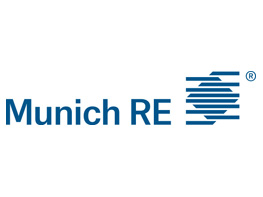Commercial Real Estate to See Improved Property Insurance Market

Commercial real estate owners and operators are experiencing improved property insurance market conditions in early 2024, while the casualty market is more challenging for buyers, according to a recent Gallagher report.
The report, which look at trends the broker is seeing in the commercial real estate and hospitality market, indicates that most non-CAT exposed assets without significant loss experiences can expect property renewal rate increases of flat to 10%. However, policyholders with CAT perils and poor loss performance may continue to see increases exceeding 15%.
“2024 has kicked off with an improved property market based on the lack of material hurricane activity in 2023. In recent meetings in London as well as domestically, the common theme is that the property markets want to grow and retain clients. This is translating into lower pricing increases compared to previous years,” the report stated.
The pace of insurer-mandated increases in property valuations has slowed compared to previous cycles. Insureds that have achieved valuation adequacy in the eyes of insurers can expect renewal value increases to fall in line with U.S. headline inflation, currently at 3.2%. However, those lagging behind may face mandated increases of 10% to 20% to bridge the gap, the report states.
Commercial property insurance deductibles have also seen changes, with water damage deductibles exceeding $100,000 for mid-to-high-rise buildings.
“We have seen carriers seeking $250,000 and above, pushing insureds to retain frequency losses for water damage and reserve coverage for severity issues,” the report noted.
All Other Peril (AOP) deductibles are on the rise as well, with a $10,000 deductible becoming more common starting point.
Capacity for commercial property is evolving, with a limited number of new entrants favoring smaller portfolios with single-location total insurable values (TIVs) up to $20 million. Larger risks requiring shared and layered placements will benefit from a revival of capacity in the London marketplace, resulting in moderated increases and, in some cases, decreases. However, securing large amounts of capacity remains a challenge for risks with heavy CAT exposure to perils such as earthquakes and named storms, Gallagher reports.
While the commercial property market shows signs of improvement, the casualty market continues to face challenges due to rising claims costs driven by third-party litigation financing (TPLF), according to the report.
“Without meaningful changes in tort reform and jury disclosures related to TPLF, claims costs are expected to continue to balloon, driving rates higher,” Gallagher stated. “TPLF is among the greatest threats to the sustainability of the casualty underwriting ecosystem.”
The report noted that one unnamed European reinsurer reportedly has added more than $2 billion of funds to reserves for claims related to U.S. casualty placements in 2023 alone.
According to Susan Patelson, national casualty leader for Gallagher’s Real Estate and Hospitality Practice, average rate increases for primary general liability policies are between 3% to 9%.
Insureds are struggling the most with larger liability insurance placements that require a lead $25 million umbrella, as insurers seek the most rate in this layer due to their exposure to nuclear verdicts — those greater than $10 million– which are being fueled by TPLF, the report explained.
Casualty carriers are also reducing the capacity they are willing to offer, increasing the number of insurers required to fill out large liability towers and adding frictional costs via minimum premiums, the report said.
Organizations that can demonstrate risk mitigation through on-premises property management and strong contractual risk transfer will be viewed favorably by underwriters, according to the report.
View the full report on Gallagher’s website. &










